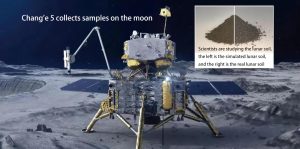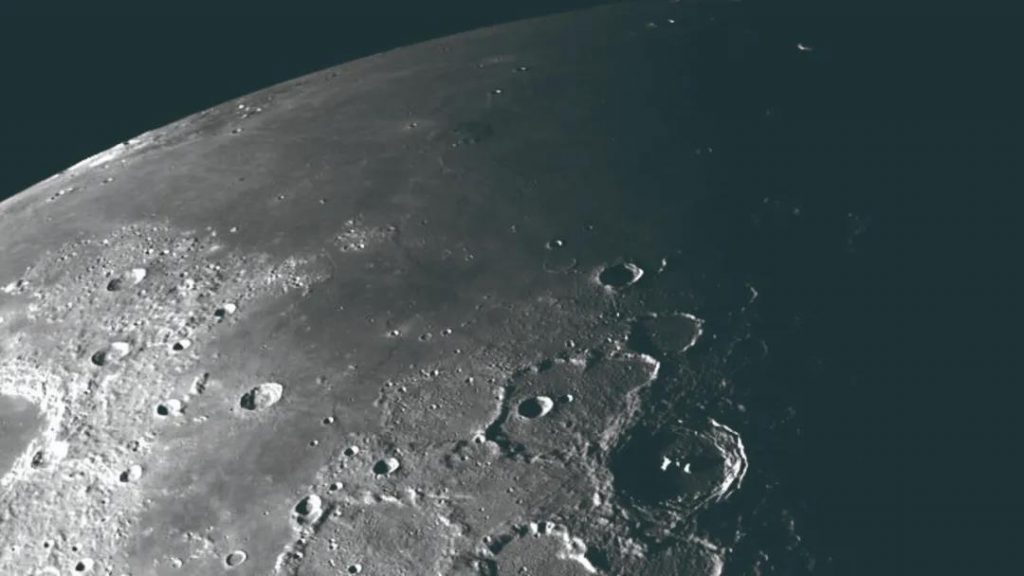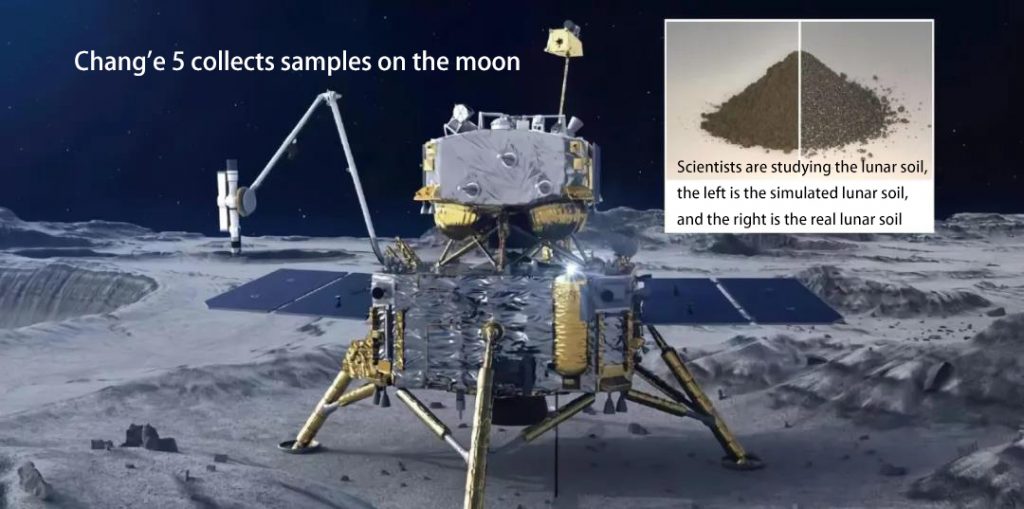
Long ago, what was the sun like? What happened in the Milky way and have to tell the story? If you want to know these secrets, come to the moon and read its “diary”.
How does the moon write a diary
Using the methods of stratum coverage, statistical analysis of impact crater density and lunar isotope dating, scientists speculate that the age of the moon is about 4.4 billion ~ 4.6 billion years old.
In such a long time, the moon has been exposed to the space environment day and night, receiving high-energy particle radiation from the sun and other stars in the Milky way for many years. These particles “burn” the moon and react with other substances on the lunar surface. This is the “cosmic diary” recorded by the moon.

You might say that these diaries are also recorded on the earth. Why don’t we look for “cosmic Diaries” on the earth? The solar wind (that is, the high-energy particles emitted by the sun) will blow through the entire solar system, but these high-energy charged particles rarely reach the earth’s surface. This is because the earth is covered with a magnetosphere, which will change the path of these charged particles and make the particles turn before colliding with the earth. The colorful Aurora at the earth’s poles is the interaction between the earth’s magnetic field and the solar wind.
At the same time, the earth has a thick atmosphere, which will also absorb these particles. Therefore, high-energy particles can hardly meet the earth’s surface, so there is no “diary”.
But the moon is different. Although there may have been a magnetic field in the short period when it was just formed, the existence of the lunar magnetic field is basically undetectable now.
Moreover, the moon has almost no atmosphere, so the solar wind can reach the lunar surface directly. After each small solar particle collides with the lunar dust, it will tear a tiny hole in the lunar dust, and even change the element composition of the lunar dust.
Therefore, by studying the chemical structure of lunar dust, we can see the records of solar activity.
In addition to the sun, the activities of other stars in the Milky way also emit high-energy particles, such as supernova explosions when giant stars die. The particles released by these activities usually have more energy than the solar wind, so that they can leave “obvious” scars on the lunar rocks, which can be observed under the microscope.
At the same time, cosmic rays can also change the molecular composition of barite and make it undergo nuclear fission. By reading the “moon diary”, we can learn more about the secret history of the universe.
Sun chronicle in diary
Since 1969, the Apollo program of the United States has landed on the moon six times, and the Soviet moon 1 has landed on the moon three times.
More than 380 kilograms of lunar rocks, pebbles and lunar soil have been retrieved, and rich lunar geological research has been carried out. In December 2020, China’s Chang’e V collected more than 1731 grams of lunar samples. How many stories have scientists read from these “Diaries”?
At present, eight planets have been found in the solar system, among which Mars has a geological environment similar to that of the earth, and Venus has some conditions suitable for biological survival in its thick atmosphere. However, no traces of life activities have been found on these planets, but the earth is full of vitality. Why?
The answer to this question is recorded in the lunar “diary”. The team led by NASA astrophysicist praba sasina examined the rock samples brought back from the moon and found that the lunar rocks have different chemical components compared with those on earth, and the lunar rocks contain significantly less elements such as potassium and sodium.
Scientists believe that this is because the solar wind separates these chemicals from the lunar surface, while the earth’s atmosphere weakens the influence of the solar wind.
The same thing happened in the “infancy” of the sun. Four billion years ago, when the sun was a baby, it experienced a strong burst of radiation, ejecting hot high-energy particles. These high-energy particles came to the earth and stimulated the germination of life on the earth by initiating chemical reactions. From then on, life appeared on the earth.
However, the same solar wind blew away the atmosphere of other planets, took away the nutrients of the planet itself, and prevented the emergence of life on other planets. The reason for this difference is that the magnetic field of Mars, Venus and other planets is weak, and the atmospheric environment is more easily damaged by the solar wind, while the earth is protected by a magnetic field. The solar wind not only does not damage the earth’s atmosphere, but promotes the birth of life.
Galactic events recorded by the moon
In the past 9 million years, there have been many supernova explosions about 300 light-years away from the earth. These events not only changed the earth’s climate, but also led to small-scale biological extinction. These stories were recently read by scientists from the lunar soil.
In the past, scientists believed that only a supernova explosion within 25 light-years from the earth could make the earth subject to strong enough radiation, leading to large-scale species extinction, while supernova explosions hundreds of light-years away were not enough to fear, but the evidence found in recent years has changed this idea.
A research team from Washburn University in the United States observed the explosion of a supernova about 325 light-years away from the earth. It was found that the energy of high-energy particles radiated by it is stronger than that of the solar wind. It can spread hundreds of light-years to the earth, and even pass through the earth’s magnetic field, affecting earth’s life.

A research team once detected a large amount of iron-60 from the samples of the earth’s deep-sea sediments. After analysis, the age of these substances is about 2 million ~ 8 million years old.
The research team speculated that these iron-60 fell to the earth after the supernova explosion. In 2016, the team also detected iron-60 in lunar soil samples, and these iron-60 are the same age as those in Earth’s deep-sea sediments.
In addition, in lunar soil samples, researchers also found elements such as calcium-41 and Manganese-53, which suggest the time of the same supernova explosion.
Finally, the research team calculated that a supernova explosion occurred about 300 light-years away from the earth about 2.6 million years ago.
The particles produced by the explosion affected the earth’s clouds, cooling the earth, exterminating some species with small groups on the earth, and causing some genetic mutations in organisms, which may trigger a species diversity evolution.
The moon can provide more than that. Scientists have proposed the idea of finding evidence of dark matter in ancient rocks: when dark matter passes through rock particles, they will leave damage traces in some minerals.
In order to reduce the impact of geological and human activities, they look for ancient rocks in the depths of the earth, but the excavation work is dangerous, and they have to spend a lot of time proving that the traces left in the rocks are not affected by neutrons, solar neutrinos or other substances, but only by dark matter. Using lunar rock to find dark matter may be a better choice.
It is old enough and is likely to have been hit by dark matter many times; Moreover, the moon is hardly affected by geological and human activities, and the traces of dark matter (if any) are easier to retain for a long time.
There are still many unsolved mysteries in the universe, and the moon diary is likely to help us solve some of them. Marching on the moon is in the ascendant.
Comments